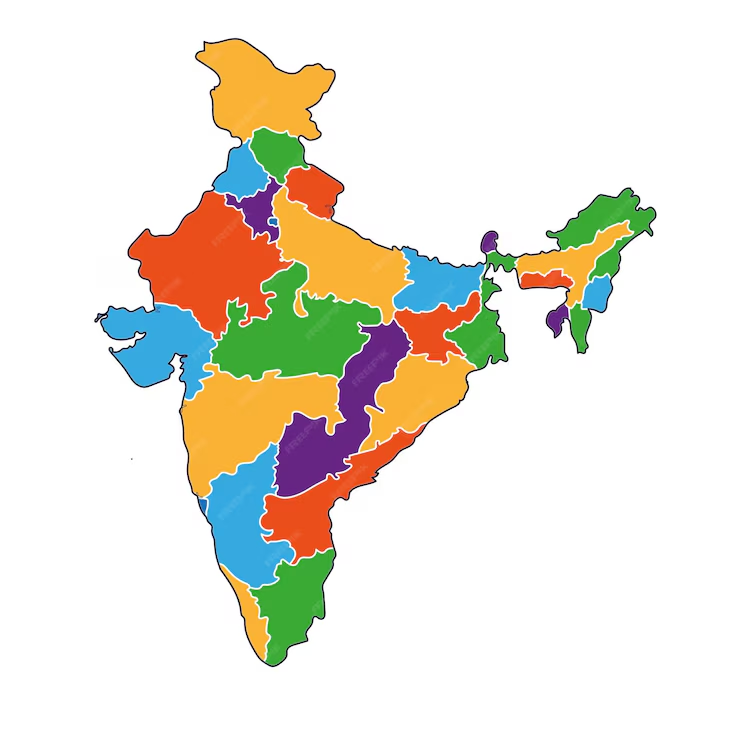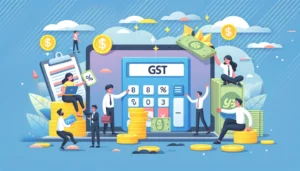GST Registration-Advantages and Disadvantages
- 20 Sep 24
- 17 mins

GST Registration-Advantages and Disadvantages
Key Takeaway
- GST has unified multiple central and state taxes into a single system, simplifying the tax structure and reducing the cascading effect of taxes.
- The implementation of GST has significantly enhanced logistics efficiency by eliminating inter-state checkpoints and simplifying the movement of goods across India.
- Small businesses can benefit from GST through the Composition Scheme, which offers simpler compliance and a lower tax rate on turnover.
- GST has imposed new challenges for businesses, particularly small businesses, due to increased compliance costs and the complexities of the input tax credit system.
- GST has streamlined e-commerce operations by standardizing tax collection at the source and reducing logistical barriers across state lines.
What is GST?
GST, or Goods and Services Tax, is a comprehensive, indirect tax levied on the manufacture, sale, and consumption of goods and services at a national level. Implemented to streamline the complex and overlapping tax structure, GST replaces various taxes previously levied by both state and central governments in India.
Its introduction aimed to unify the country’s vast market into a single tax regime, reducing tax-on-tax (also known as cascading effects) and enhancing overall economic efficiency. This system simplifies taxation, makes it more transparent, and aims to increase compliance among businesses by consolidating multiple taxations into a single, more manageable system.
How does GST work?
GST, or Goods and Services Tax, operates as a comprehensive, multi-stage, and destination-based tax system applied to every point in the production and distribution chain. Here's a breakdown of how it works:
Multi-Stage: GST is levied at each stage of the production process, from raw material collection to the final sale to the consumer. This means that at every step where value is added, GST is applicable. This includes manufacturing, wholesaling, and retailing activities.
Destination-Based: GST is collected from the point of consumption rather than the point of origin. This means that the tax revenue accrues to the state where the goods or services are actually consumed, not where they are produced.
Mechanism of Input Tax Credit: One of the key features of GST is the Input Tax Credit (ITC). This allows businesses to claim credit for the tax they have paid on their purchases (inputs) which can be used to reduce the tax they need to pay on their sales (output). This mechanism ensures that the tax is levied only on the value added at each stage of the supply chain, removing the "tax on tax" scenario seen in the previous tax system.
How It Applies
- Manufacturers and Service Providers: They pay GST on the raw materials and services they buy and charge GST on the products and services they sell. The difference between the GST on sales and the GST on purchases can be claimed as an input tax credit, thus ensuring that the manufacturer or service provider pays the net tax due.
- Wholesalers and Retailers: Similarly, wholesalers and retailers pay GST on goods purchased from manufacturers and charge GST on goods sold to consumers. They can claim an input tax credit to set off the GST liabilities on their sales.
- Final Consumer: The end consumer of the goods or services bears the GST charged by the last dealer in the supply chain, as they do not have the opportunity to claim input tax credits. This makes GST essentially a tax only on the final consumption.
GST simplifies tax administration and ensures greater compliance by consolidating multiple indirect taxes into a single tax, reducing the burden of multiple return filings and promoting a seamless national market.
Different Types of GST

In the GST (Goods and Services Tax) framework in India, there are three types of taxes that are levied depending on the nature of the transaction—whether it is intra-state or inter-state. These are SGST (State Goods and Services Tax), CGST (Central Goods and Services Tax), and UTGST (Union Territory Goods and Services Tax). Here’s a closer look at each type:
SGST (State Goods and Services Tax)
SGST is one of the two taxes levied on all transactions within a single state. This tax is collected by the state government. When a transaction occurs within a state, both SGST and CGST are levied, and the revenue collected under SGST is credited to the state’s treasury. It is intended to replace the state taxes such as VAT (Value Added Tax), state sales tax, luxury tax, etc.
CGST (Central Goods and Services Tax)
CGST is levied along with SGST on all intra-state transactions. This tax is collected by the Central Government and replaces various central taxes such as CST (Central Sales Tax), Service Tax, Excise Duty, and others. The revenue collected under CGST goes to the central government. The rates of CGST and SGST are generally equal, ensuring that the total tax burden on the consumer is split evenly between the state and the central government.
UTGST (Union Territory Goods and Services Tax)
UTGST is levied in place of SGST in the Union Territories of India, which do not have a legislature. This includes territories like Chandigarh, Lakshadweep, Daman and Diu, Dadra and Nagar Haveli, and Andaman and Nicobar Islands. UTGST acts similarly to SGST and is collected by the Union Territory government. When a transaction occurs within a Union Territory, UTGST and CGST are levied.
These different types of GST ensure that both state and central governments can accrue revenue on the same base without the tax cascading effect previously seen in the indirect tax regime. This structured approach also helps in maintaining a uniform tax law across the country, thereby simplifying tax compliance and administration.
Advantages of GST Registration
Registering for GST (Goods and Services Tax) offers several benefits to businesses, two of which include an increased threshold limit for registration and the reduction of the cascading effect of taxes. Here’s a detailed look at each of these benefits:

Increased Threshold Limit: Prior to the implementation of GST, businesses with a turnover exceeding as little as INR 5 lakh (approximately $6,250) were required to pay VAT, which varied from state to state. With the introduction of GST, this threshold has been significantly increased to INR 20 lakh (approximately $25,000) for most states and INR 10 lakh (approximately $12,500) for North-Eastern and hilly states.
This higher threshold offers small businesses relief from the obligations of tax compliance at a lower scale, thereby reducing their burden and encouraging business formalization. This means small traders and service providers who fall below this threshold are exempt from GST, thus minimizing their tax liability and compliance costs.
💡If you want to pay your GST with Credit Card, then download Pice Business Payment App. Pice is the one stop app for all paying all your business expenses.
Reduces the Cascading Effect: One of the most significant advantages of GST is its ability to minimize the cascading effect of taxes. The cascading effect occurs when tax is levied on a tax, leading to an increase in the overall tax burden on the final consumer. Under the GST system, the input tax credit mechanism allows businesses to claim credits for the tax paid on their inputs (goods and services used in the production process).
This credit can then be used to offset GST payable on the output (goods and services sold), ensuring that tax is only paid on the value added at each stage of the supply chain and not on the tax previously paid. This elimination of tax-on-tax significantly reduces the overall tax burden, lowers the cost of goods and services, and can potentially lead to a decrease in prices for consumers.

Improved Logistics Efficiency: The implementation of GST has significantly improved logistics efficiency across India. Prior to GST, the interstate movement of goods was cumbersome and slow due to the prevalence of various state levies such as octroi, entry taxes, and others, which resulted in long queues at state borders. These taxes have been subsumed under GST, eliminating the need for multiple checkpoints, thus facilitating smoother movement of goods across state lines.
This has led to a reduction in unnecessary logistics costs, as companies no longer need to maintain multiple warehouses across states to avoid state taxes. Businesses can now optimize their supply chains based on demand and logistics rather than tax considerations. The unified tax regime under GST has therefore not only sped up the transportation of goods but also helped companies in reducing their operational costs, which can be especially beneficial in sectors like e-commerce and manufacturing where goods frequently move across state boundaries.
Simplified Registration Process: GST has streamlined the registration process by making it entirely online through a centralized portal managed by the GSTN (Goods and Services Tax Network). This simplification is a major relief for new and existing businesses, as it eliminates the need to register separately with different tax authorities under various tax laws like VAT, Excise, and Service Tax.
The GST portal provides a single platform for all tax-related services, including registration, tax payment, and filing of returns. It also provides automatic updates and alerts to ensure compliance and keep taxpayers informed of any changes or requirements. The online process is standardized across India, which simplifies doing business across state borders. With a single GST registration, a business can operate in multiple states without the need for multiple tax filings, which previously was a complex and time-consuming process.
Composition Scheme for Small Businesses: The Composition Scheme under GST is specifically designed for small businesses to reduce their burden of compliance in terms of filing returns and maintaining detailed records. This scheme is applicable to small businesses with an annual turnover of up to INR 1.5 crore (approximately $187,500), allowing them to pay GST at a fixed rate of their turnover, which is significantly lower than the regular GST rates. The rates under the Composition Scheme range between 1% and 5%, depending on the type of business (manufacturers, restaurants, other service providers).
This scheme simplifies the tax paying process as it requires businesses to file quarterly returns instead of the monthly returns required under the regular GST system. Additionally, the simplified paperwork and reduced compliance time and costs make it highly attractive for small enterprises, helping them to focus more on their business operations rather than on complex tax compliance procedures.
Regulates the Unorganized Sector: GST plays a crucial role in regulating the unorganized sector, which includes industries and services that are not regulated by any formal body and where employment terms are generally non-contractual. Prior to GST, this sector was largely untaxed and unregulated, contributing to a significant portion of the economy operating below the radar of tax authorities.
By bringing a large number of small businesses into the tax net, GST has increased transparency and accountability in the unorganized sector. The requirement to maintain digital records for GST compliance promotes formalization of businesses, making it difficult for entities to remain entirely unrecorded. This transition not only aids in better regulation of the sector but also helps in curbing tax evasion and boosting government revenues.
Moreover, GST's uniform framework and the necessity to obtain GST registration for trading with registered entities encourage businesses in the unorganized sector to adopt formal practices. This shift helps in improving the overall economic stability of the country, ensuring fair competition among businesses, and enhancing the quality of goods and services provided to consumers.
Fewer Compliance Requirements: The introduction of GST has consolidated multiple indirect taxes into one unified system, significantly reducing the compliance burden on businesses. Previously, companies had to adhere to various tax laws such as VAT, Excise, and Service Tax, each with its own rules and filing requirements. Under GST, these have been replaced with a single, streamlined process. This means fewer tax filings, simplified bookkeeping, and reduced handling of paperwork, as businesses now only need to comply with one unified set of regulations.
Furthermore, GST has introduced an integrated online platform for tax payments, filing returns, and registration. This digital approach facilitates a more efficient handling of tax-related activities, making the process quicker and less prone to human error. The unified system not only simplifies the understanding of tax liabilities for businesses but also makes it easier to remain compliant, thus reducing the resources and time spent on tax administration.
Streamlined E-Commerce Operations: GST has also had a positive impact on e-commerce operations by introducing specific provisions for this sector. One of the key features is the Tax Collected at Source (TCS) mechanism, which mandates that e-commerce operators collect tax at the source when a supplier makes a sale through their platform. This ensures that GST is collected and reported in a systematic manner, increasing transparency and compliance.

Additionally, GST has removed the complexities associated with inter-state movement of goods, which is particularly beneficial for e-commerce businesses that often operate on a national scale. Before GST, selling goods across state lines was fraught with various tax regulations and compliance issues, including entry taxes imposed by different states. With GST, these barriers have been removed, facilitating smoother logistics and faster delivery of goods across different parts of the country.
Documents Needed For GST Registration

When registering for GST under the current GST regime, businesses need to prepare and submit several key documents to ensure compliance and verification. Here’s a list of the essential documents required for GST registration:
For Individual/Sole Proprietors:
- PAN Card of the owner
- Aadhaar Card of the owner
- Passport-sized Photograph of the owner
- Proof of Business Registration or other business documents depending on the type of business
- Address Proof of the business location (could include utility bills, lease or rent agreement, property tax receipt, etc.)
- Bank Account Details (bank statement, canceled cheque, or first page of passbook)
For Partnerships and LLPs:
- PAN Card of the Partnership firm or LLP
- Partnership Deed/LLP Agreement
- Photographs of all partners (passport-sized)
- Proof of Appointment of authorized signatory (for LLPs)
- Aadhaar Card and PAN Card of the authorized signatory and all partners
- Proof of Principal/Additional Place of Business
- Bank Account Details (bank statement, canceled cheque, or first page of passbook)
For Private Limited Companies and Public Companies:
- Certificate of Incorporation issued by the Ministry of Corporate Affairs
- PAN Card of the Company
- Memorandum of Association (MOA) and Articles of Association (AOA)
- Resolution signed by Board Members
- Photographs and PAN Card of all directors
- Aadhaar Card of Directors
- Proof of Appointment of authorized signatory
- Proof of Principal/Additional Place of Business
- Bank Account Details (bank statement, canceled cheque, or first page of passbook)
Additional Common Requirements for All Businesses:
- Digital Signature Certificate (DSC) of the authorized person to sign the GST application (mandatory for companies and LLPs)
- Letter of Authorization or Board Resolution for Authorized Signatory for signing the GST application
The documents required can vary slightly depending on the business structure and the state in which the business is registered. Collecting and preparing these documents in advance can help streamline the registration process under the GST regime, ensuring that businesses can comply with the requirements efficiently and effectively.
Disadvantages of GST
While the GST (Goods and Services Tax) has brought many advantages to the Indian tax framework, it also presents several disadvantages or challenges, particularly for certain sectors and smaller businesses. Here are some of the notable disadvantages of GST, including the complexities associated with input tax credits:
Increased Costs for Small Businesses: Small businesses have faced increased costs due to GST. Compliance requires investment in technology and professional services, as businesses must file multiple returns annually and maintain digital records. For many small enterprises, this means higher operational costs and the need to hire tax professionals to navigate the complexities of GST compliance.
Complexity of Input Tax Credit: The input tax credit mechanism, while beneficial in avoiding the cascading effect of taxes, is complex and often difficult to manage. Businesses can claim input tax credit only if their suppliers have complied with their tax duties. This creates a dependency that can lead to cash flow issues if suppliers fail to comply with GST regulations. Additionally, the process of matching, claiming, and reconciling input tax credits can be cumbersome and time-consuming, especially for businesses without the necessary accounting expertise.
Technological Challenges: GST implementation relies heavily on digital technology, as all tax filing and most communications are required to be performed online through the GST portal. This shift has been challenging for businesses in rural or remote areas where internet connectivity and technology adoption are limited. The dependence on technology has also led to difficulties during periods of technical glitches and downtime in the GSTN (GST Network) portal.
Compliance Burden:Despite the aim to simplify the tax structure, GST has increased the compliance burden for many businesses. The frequency of filings, the complexity of forms, and the detailed records required for input tax credits and other deductions can be overwhelming. This is particularly challenging for sectors with complex supply chains or those dealing with exempt, non-GST, and GST goods simultaneously.
Increased Operating Costs: GST requires a seamless flow of credit, but there are still numerous conditions and exclusions. Certain goods and services are not eligible for input tax credit, which can lead to increased costs that businesses often pass on to consumers. For example, industries like construction and restaurants face restrictions on input tax credit on certain inputs, thereby increasing the cost of operations.
Impact on Cash Flow: The requirement to pay GST at the time of raising an invoice (rather than when the payment is received) can impact the cash flow of businesses that operate on credit. This is particularly tough for small and medium enterprises (SMEs) that may not have enough liquidity and often operate on delayed payment terms.
 By
By 


















